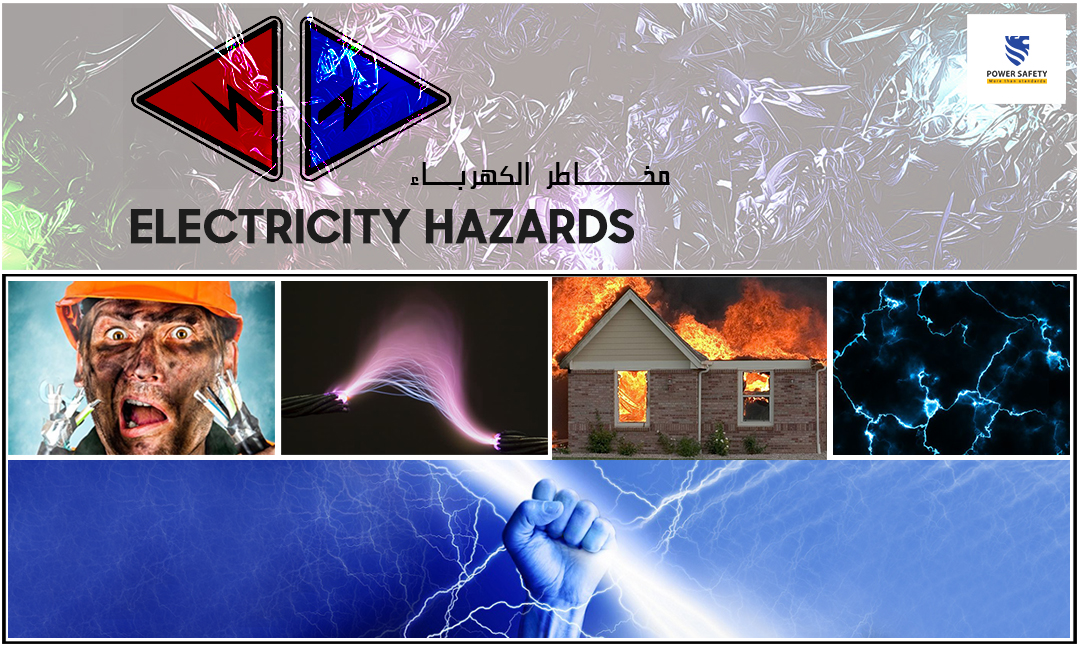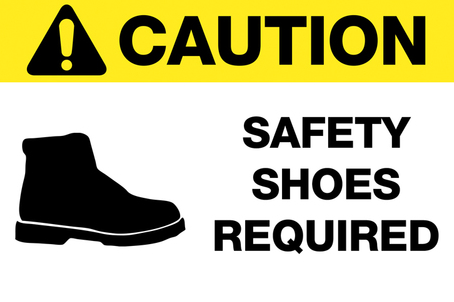Electricity hazards
Introduction about the hazards of electricity:
- Electricity hazard is an essential source of energy and the nerve of modern life, and it is the driving energy in various industries.
- The use of electricity is not without risks to humans and property, and electrical hazards are definitely present in connections, maintenance, and use of electrical appliances.
- Control of most of the electrical hazards is not difficult or expensive,
but ignoring and neglecting electricity protection measures causes many damages to people and property.
Nature of Electricity :
- Electricity: Energy in the form of charged small particles (electrons) that flow into a Conductor like the flow of water in a tube.
- Electric current: is the amount of electrons passing through a certain point and time, measured in amperes.
- Wattage: causes current to flow and is measured in volts
- During the flow of current, a resistance of the conductor is called a Resistance and is measured in ohms (OHMS).
OHMs Law states that:
The amount of current passing (in amps) is directly proportional to the driving force (in volts) and inversely to the resistance of the electrical circuit (ohms).
Current (in Amps) = electric driving force (voltage) in volts / electrical resistance (in ohms) .
For electricity to work, a complete circuit must be available that starts from the source and returns to the source.
The current always flows in a closed circuit.
The stream always searches for the path with the lowest resistance in order to take it.o Electricity always flows and moves towards the ground.
A person always represents the least resistance of the electric current, and represents a full circle when touching the ground.
Types of electrical hazards:
Electrical Shock Hazards
Electricity and Burn Hazards
Electrical hazards, cracks and crackles – Arc – Blasto
Electrical, Fire, and Explosion Hazards Fires and Explosions
1- Electric shock:
The extent of the impact of electric shock on the human body depends on:
- Amount of current passing through the body & path of current.
- The time the current remains and is connected to the body. & Gender (Male-Female) – Health status – Weight – Age
- The degree of skin moisture. The type of exposed organ of the body.
From the above points, it becomes clear that the electric current is the one that causes the injury to humans, not the electrical voltage.
Here is a table showing the different effects of the current on the human body:·
- An electric shock occurs when the body becomes part of the electrical circuit and can occur in three ways, as follows:
- The connection with both connections (live and neutral) at the same time, and the body, in this case, is similar to the priming of a bulb or motor windings, and the body,
in this case, is a resistance and the electric current passes through it.·
- Contact the hot wire (conductor) current, and in this case, the body is considered a ground connection.·
- Short-circuit when the hot wire touches the metal parts (holder – frame – hand or machine or machine tool electrical casing)
and becomes loaded with electrical energy
and as soon as it is touched the electric shock occurs.
Note:
- Most electric shocks are fatal because they pass through or near the heart muscle.
For Example, an electric current of 100 mA passes through the heart in a third of a second and causes contractions
and violent heart flutter followed by stopping.
- The non-lethal effects of current passing through the body range from a slight tingling sensation to severe pain and violent muscle cramps.
- Muscle agitation becomes dangerous when the person (Freezing) freezes in its place and loses its ability to move.
- Also, the electric shock can lead to the possibility of other effects such as burns and internal bleeding.
- If the contact time is short, a cardiac arrest occurs, and a respirator is ventilated within 3-4 minutes of the shock, the heartbeat can be repeated.
- Do not try to touch the person with an electric shock if he is still holding the electrical current
and if you are not able to disconnect the electrical current then withdraw or push the injured person away from the current with a piece of wood – a dry rope – a piece of cloth.
- The intensity of the electric shock depends on the condition of the skin. Dry skin has a large electrical resistance.
- The electric shock from its source of strength (120 volts) may be less than (1 mA).
- Minor sweat or skin moisture greatly reduces its electrical resistance and reaches the body to a lethal extent.
If you stand in the water or rest on a wet surface, the electric shock currents may reach (800 mA).
, which is thus above the lethal limit.
Follow us in the next ………
Read more on the Power Safety Blog
For more about Safety Shoe products and all PPE’S personal protective equipment industrial safety duties at Power Safety Factory, please click here
For more about PPE’S equipment for Cadmus Safety, please click here


